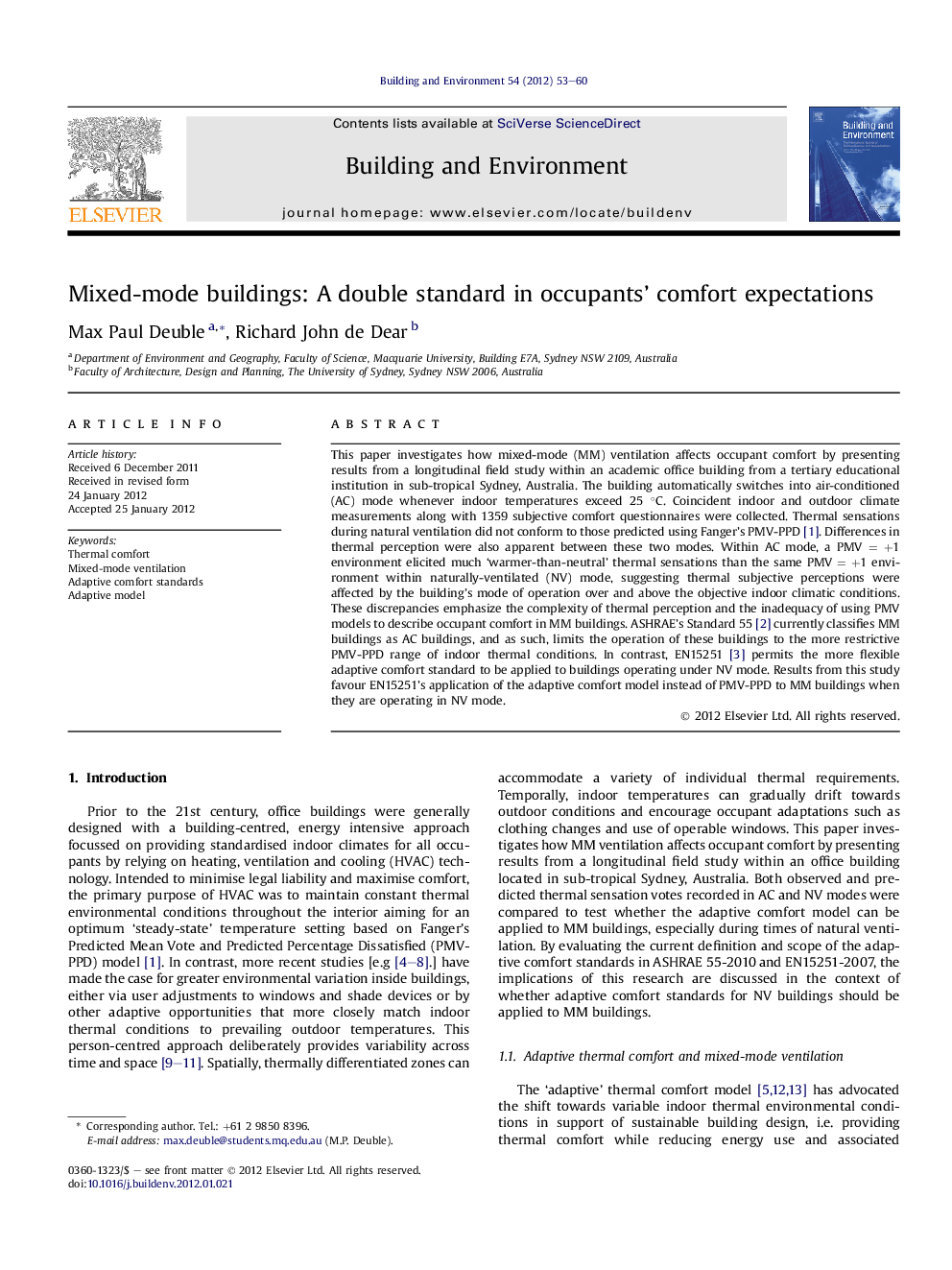| کد مقاله | کد نشریه | سال انتشار | مقاله انگلیسی | نسخه تمام متن |
|---|---|---|---|---|
| 248565 | 502575 | 2012 | 8 صفحه PDF | دانلود رایگان |

This paper investigates how mixed-mode (MM) ventilation affects occupant comfort by presenting results from a longitudinal field study within an academic office building from a tertiary educational institution in sub-tropical Sydney, Australia. The building automatically switches into air-conditioned (AC) mode whenever indoor temperatures exceed 25 °C. Coincident indoor and outdoor climate measurements along with 1359 subjective comfort questionnaires were collected. Thermal sensations during natural ventilation did not conform to those predicted using Fanger’s PMV-PPD [1]. Differences in thermal perception were also apparent between these two modes. Within AC mode, a PMV = +1 environment elicited much ‘warmer-than-neutral’ thermal sensations than the same PMV = +1 environment within naturally-ventilated (NV) mode, suggesting thermal subjective perceptions were affected by the building’s mode of operation over and above the objective indoor climatic conditions. These discrepancies emphasize the complexity of thermal perception and the inadequacy of using PMV models to describe occupant comfort in MM buildings. ASHRAE’s Standard 55 [2] currently classifies MM buildings as AC buildings, and as such, limits the operation of these buildings to the more restrictive PMV-PPD range of indoor thermal conditions. In contrast, EN15251 [3] permits the more flexible adaptive comfort standard to be applied to buildings operating under NV mode. Results from this study favour EN15251’s application of the adaptive comfort model instead of PMV-PPD to MM buildings when they are operating in NV mode.
► Observed thermal sensations during AC mode conformed to the PMV values.
► Actual Mean Vote responses did not conform to the PMV model in NV mode.
► Gentle gradient of thermal sensation during NV mode suggests greater adaptability.
► Results favour EN15251’s application of the adaptive comfort model.
Journal: Building and Environment - Volume 54, August 2012, Pages 53–60